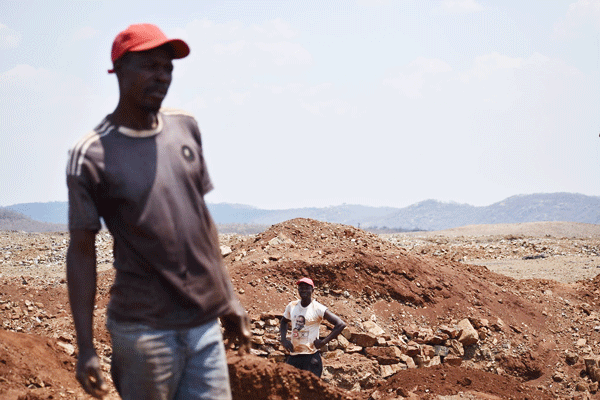
The unfolding tragedy where dozens of miners have been trapped underground after an abandoned gold mine collapsed in Bindura last Wednesday raises serious questions over the safety of mining operations across the country.
EDITORIAL COMMENT
Six men have so far been rescued alive from the mine, but 30 people remained unaccounted for as of yesterday.
Rescue efforts were complicated by the fact that the 100-metre-long mine shaft was flooded and that the teams were not adequately prepared.
For example, a lot of time was lost after the generator used to drain the water jammed and a replacement was only found several hours later.
The Bindura incident came hard on the heels of another mine collapse in Esigodini in Matabeleland South where six miners are feared dead after they were trapped underground more than two weeks ago.
In Chegutu, five miners died when a gold mine collapsed in September.
Last year, tragedy also struck in Battlefields, near Kadoma, when 24 miners died after two gold mines collapsed following heavy rains.
- Chamisa under fire over US$120K donation
- Mavhunga puts DeMbare into Chibuku quarterfinals
- Pension funds bet on Cabora Bassa oilfields
- Councils defy govt fire tender directive
Keep Reading
The now frequent mine collapses point to very serious problems in the mining sector that need urgent attention from both the miners and the government.
Most of these mines that are collapsing are owned by small-scale miners and this could be an indication that they are not investing as much as they should in the safety of their workers.
The government has also been caught napping when it comes to the regulation and monitoring of the mining sector, hence the spike in serious accidents around the mines.
According to a recent audit report by the auditor-general Mildred Chiri, investigations undertaken across the country revealed that “the ministry (of Mines and Mining Development) had not been able to carry out adequate monitoring of occupational health and safety issues in mining operations and there was high risk that mining operators would not comply with regulations, which require them to create and maintain a safe working environment”.
Chiri pointed out that some of the shortcomings were the “absence of a database for mining claims, inadequate routine (preventive) inspections, uneven vehicle distribution and lack of testing and disaster recovery equipment”.
The audit pinpointed the many reasons behind the now frequent mine accidents and it is high time the authorities took note of these red flags.
Zimbabwe’s deepening economic problems have forced millions into informal mining activities and the government must respond by ensuring that the working environment is safe for the multitudes.
The government has to also, as a matter of urgency, invest in disaster recovery equipment to ensure that what is happening in Bindura and Esigodini where miners remained trapped underground for several days because there is no suitable equipment to mount rescue operations, does not recur.











